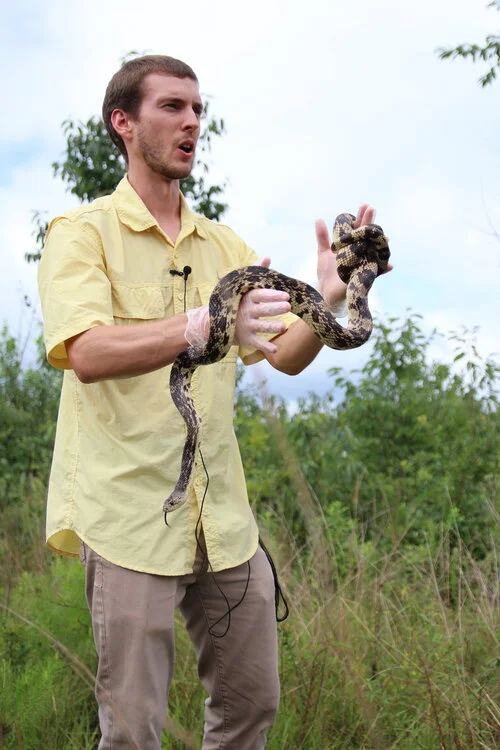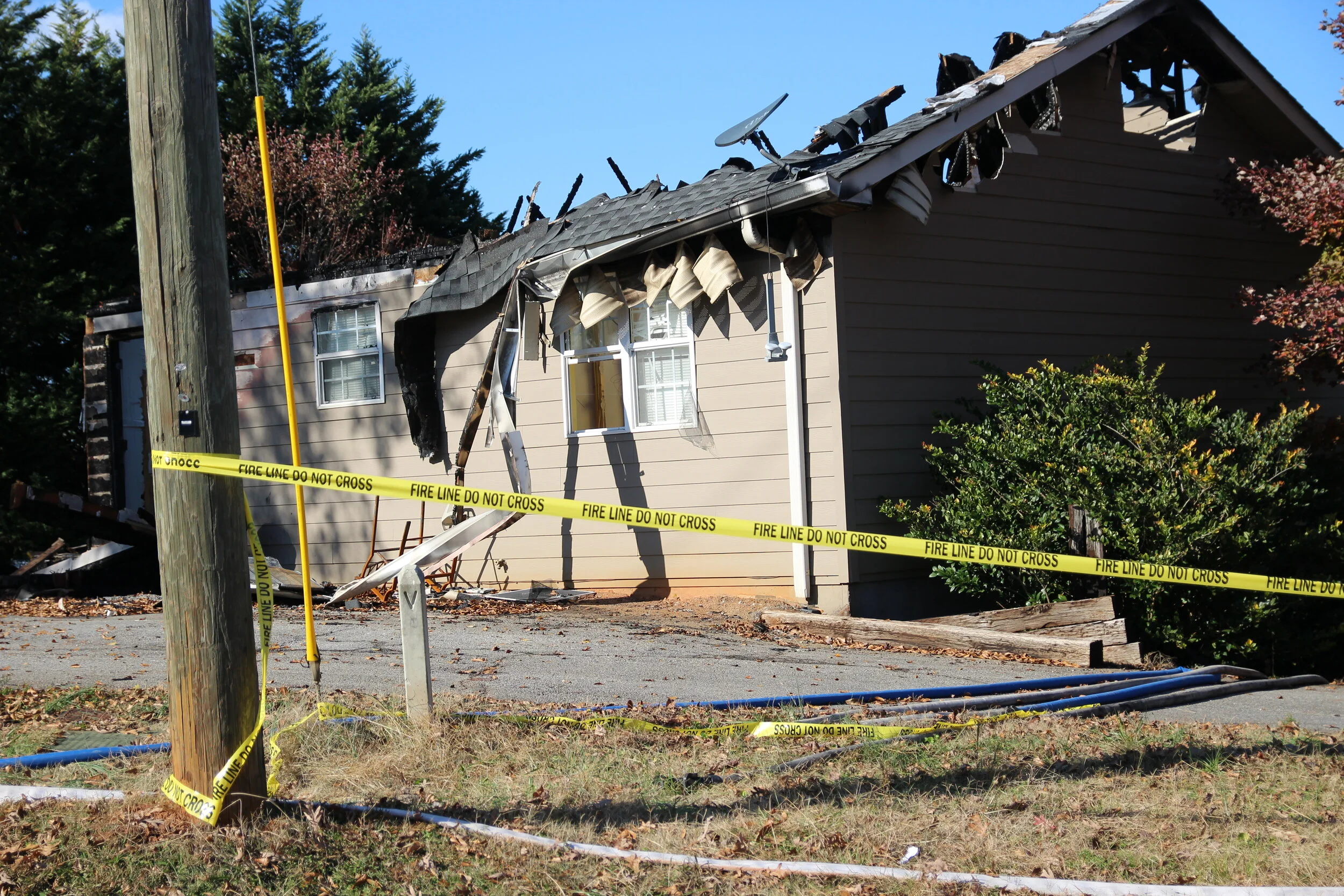Hudson's Project Pine Snake Encounters Recent Milestone
BY ERIC PEREIRA
This article was originally published in the July 19, 2019 edition of The Northeast Georgian.
Sometime around the week of July 8, Georgia Department of Natural Resources Game Management Wildlife Technician II Trent Blalock came across and captured an adult northern pine snake in his path at the Lake Russell Wildlife Management Area (WMA).
But it wasn’t your average pine snake (locally known as a bull snake), mainly because researchers aren’t exactly sure what type of species it is.
“I say ‘species’ loosely because that’s part of this research, we’re not exactly sure on a phylogeographic scale, what the animal that we have from this exact site is,” said Clemson University PhD student Bryan Hudson, who’s interested in the conservation of rare species and habitat types, specifically snakes and one of the founders of Project Pine Snake.
With this being the first live pine snake after years of searching, it will be the first one in the Northeast Georgia region that will be tracked using radio telemetry. It was re-released with a transmitter into the Lake Russell WMA late last week in front of a group of 20 people.
The purpose behind Project Pine Snake (which officially began in 2012) came when Hudson and his colleague Zach Felix got together to try to identify a reptilian vertebrae species that was of “high conservation interest with limited knowledge,” which was quickly identified as the pine snake.
Georgia Department of Natural Resources (DNR) and U.S. Forest Service said the pine snake is a high priority species in Georgia’s State Wildlife Action Plan, “a comprehensive strategy for conserving native wildlife, rare plants and natural habitats.”
“The northern pine snake is a creature of fire adapted pine woodland habitats. Potential habitat is fairly abundant in the Chattahoochee National Forest’s foothills landscape.”
The DNR and several entities have partnered with Clemson University to research the northern pine snake’s movement and occupancy.
“Very few live ones are ever found and of the few live ones that are ever found, probably one might go reported a year to me usually just from a picture in the Northeast Georgia region,” Hudson said. “So it’s pretty critical, this animal is the first representative in this study that we’ll be able to gather ecological data from as well as genetic data from, being a live individual. Not one that’s a picture or a dead snake.”
He went on to say that pine snakes have a large geographic distribution in various states but they seem to be absent in most areas today.
“... The question is, why? We have a few possible hypotheses,” Hudson said. “We think it could be a prairie relic species [that] adapt to these open burning systems ... .”
Hudson told the group that this project has involved several entities across the southeast including, but not limited to, state/federal partners in Alabama, Tennessee and South Carolina. Other partners include the U.S Forest Service, Georgia DNR, The Nature Conservancy, Zoo Atlanta and many universities.
“We’ll locate that animal every day for at least a month, and then after that, it will be every couple of days for the next two years ...,” Hudson said.
As time passes and data is collected, he hopes it will lead them to other pine snakes.
Hudson said he has talked to several people in Demorest, Cornelia and Toccoa asking if they’ve seen a northern pine/bull snake. He encourages those who are comfortable enough to get a photo of a northern pine/bull snake if they see one. They are harmless, nonvenomous snakes that are yellow, tan or white in color with dark blotches on their back third, a checkered pattern in the middle and a darker pattern at the head. They will blow loudly when scared.
Georgia DNR Wildlife Biologist Thomas Floyd told The Northeast Georgian that both timber rattlesnakes and copperheads are known to be from the Habersham County area, but can be confused with a harmless and rare pine snake.
“While it can be a challenge to become familiar with all of the nonvenomous snake species in a given area, the best advice regarding conflict avoidance with snakes is to become familiar with those few venomous snake species that are likely to occur in the same area through recognition of color and pattern ...,” Floyd said.
“... Never attempt to capture a venomous snake yourself or a snake that hasn’t been properly identified – leave that to a nuisance wildlife removal specialist,” he said.
Call or send a picture to Hudson at 404-556-1863/ bhudson@g.clemson.edu or Zack Felix at zif@reinhardt.edu or the Georgia DNR and U.S. Forest Service.
OTHER SNAKES IN HABERSHAM COUNTY
In regard to other snakes that may be found in Habersham County at this time of the year, Floyd said larger snakes that may be commonly encountered in the area are the corn snake, black racer, and eastern rat snake.
“... Lighter colored individuals of the latter, particular juveniles, exhibiting vivid patterns could be confused with pine snakes as they superficially resemble them,” he said.
He said that brush piles and other similar forms of cover can attract snakes to your property since it can provide shelter for them and their prey.
If you encounter a scarlet snake, milk snake, coach whip, pine snake, the DNR asks that these uncommon occurrences be properly documented with a photo, location and date.





